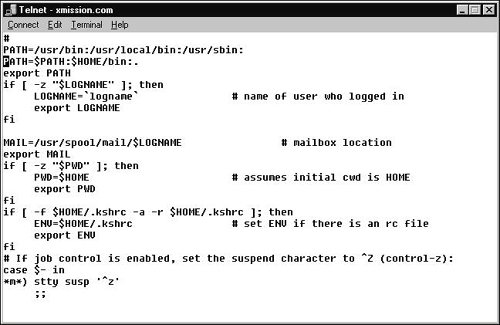Changing Your ksh Path
Changing Your ksh PathThe path statement tells the shell where to look for commands, scripts, and programs. For example, if you issue a command, the path statement tells the system to look in the named directories in a specific order. As the following steps show, you change your ksh path by first identifying where your path statement is located, then editing the file that contains it (Code Listing 8.15). Code Listing 8.15. First, find out the location of your path statement(s).
To change your ksh path:
|
EAN: 2147483647
Pages: 251
- Chapter IV How Consumers Think About Interactive Aspects of Web Advertising
- Chapter VIII Personalization Systems and Their Deployment as Web Site Interface Design Decisions
- Chapter XIV Product Catalog and Shopping Cart Effective Design
- Chapter XVII Internet Markets and E-Loyalty
- Chapter XVIII Web Systems Design, Litigation, and Online Consumer Behavior
 bin:/usr/local/bin:/usr/sbin: /home/users/e/ejray/.profile:export PATH $
bin:/usr/local/bin:/usr/sbin: /home/users/e/ejray/.profile:export PATH $ 